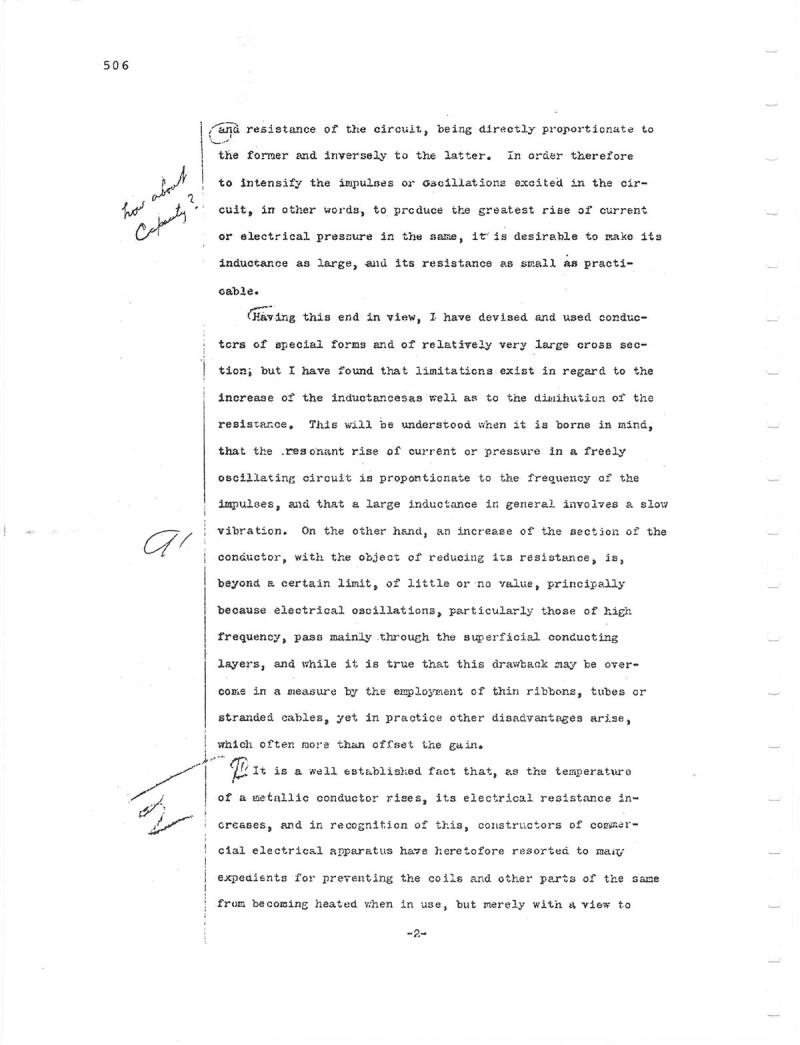
Nikola Tesla Patents
506 how about. Capauty ? a! and resistance of the circuit, being directly proportionate to the former and inversely to the latter. In order therefore to intensify the impulses or Oscillations excited in the circuit, in other words, to produce the greatest rise of current or electrical pressure in the same, it is desirable to make its inductance as large, and its resistance as small as practicable. (Having this end in view, I have devised and used conductors of special forms and of relatively very large cross section, but I have found that limitations exist in regard to the increase of the inductances as well as to the dinihution of the resistance. This will be understood when it is borne in mind, that the res onant rise of current or pressure in a freely oscillating circuit is propontionate to the frequency of the impulses, and that a large inductance in general involves a slow vibration. On the other hand, an increase of the section of the conductor, with the object of reducing its resistance, is, beyond a certai limit, of little or no value, principally because electrical oscillations, particularly those of high frequency, pass mainly through the superficial conducting layers, and while it is true that this drawback may be overcome in a measure by the employment of thin ribbons, tubes or stranded cables, yet in practice other disadvantages arise, which often more than offset the gain. P It is a well established fact that, as the temperature of a metallic conductor rises, its electrical resistance increases, and in recognition of this, constructors of commercial electrical apparatus have heretofore resorted expedients for preventing the coils and other parts of the same from becoming heated when in use, but merely with a view to mait
